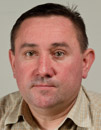Analysis and Synthesis of Audio Signals
Data is displayed for academic year: 2023./2024.
Lecturers
Course Description
Analysis and synthesis of audio signals is significant in all aspects of modern communication audio systems and audio technologies. Therefore it is necessary to know: Detection and classification of acoustic audio signals. Time and frequency presentation of audio signals and audio systems. Theory and application of frequency analysis (MLSSA, TDS, ETC, etc.). Autocorrelation function and acoustic audio spectrum. Filters and filtering techniques. Rapid Fourier transform and filter analysis of transient audio signals. Cross spectrum. Coherence. Frequency response functions. Correlation functions. Impulse response functions. Kepstral analysis. Impact of space parameters on impulse response in acoustic audio technologies. Sound field visualization. Synthesis of acoustic audio.
Study Programmes
University graduate
[FER3-HR] Audio Technologies and Electroacoustics - profile
Elective Courses
(2. semester)
Elective Courses of the Profile
(2. semester)
[FER3-HR] Communication and Space Technologies - profile
Elective Courses
(2. semester)
[FER3-HR] Computational Modelling in Engineering - profile
Elective Courses
(2. semester)
[FER3-HR] Computer Engineering - profile
Elective Courses
(2. semester)
[FER3-HR] Computer Science - profile
Elective Courses
(2. semester)
[FER3-HR] Control Systems and Robotics - profile
Elective Courses
(2. semester)
[FER3-HR] Data Science - profile
Elective Courses
(2. semester)
[FER3-HR] Electrical Power Engineering - profile
Elective Courses
(2. semester)
[FER3-HR] Electric Machines, Drives and Automation - profile
Elective Courses
(2. semester)
[FER3-HR] Electronic and Computer Engineering - profile
Elective Courses
(2. semester)
[FER3-HR] Electronics - profile
Elective Courses
(2. semester)
[FER3-HR] Information and Communication Engineering - profile
Elective Courses
(2. semester)
[FER3-HR] Network Science - profile
Elective Courses
(2. semester)
[FER3-HR] Software Engineering and Information Systems - profile
Elective Courses
(2. semester)
[FER2-HR] Electronics - profile
Specialization Course
(2. semester)
Learning Outcomes
- analyze different types of audio signals
- analyze the electroacoustic system using the input and output audio signal
- apply different filters and filtering techniques
- apply the coherence of the audio signal
- apply the frequency response function
- analyze the space parameter impact on impulse response in acoustic technologies
- describe the visualization of sound field
- evaluate the synthesis of audio signals
Forms of Teaching
Lectures
Theoretical foundations of audio signal analysis and synthesis are discussed. The theoretical part is supplemented by demonstrations, when possible.
Seminars and workshopsStudents will write a seminar in the field of audio signal analysis and synthesis.
ExercisesStudents will solve mathematical tasks of analysis and synthesis of audio signals.
LaboratoryStudents will analyze the elements of audio signal analysis and synthesis through laboratory exercises in small groups.
Grading Method
| Continuous Assessment | Exam | |||||
|---|---|---|---|---|---|---|
| Type | Threshold | Percent of Grade | Threshold | Percent of Grade | ||
| Laboratory Exercises | 0 % | 15 % | 0 % | 15 % | ||
| Seminar/Project | 0 % | 15 % | 0 % | 15 % | ||
| Mid Term Exam: Written | 0 % | 20 % | 0 % | |||
| Final Exam: Written | 0 % | 20 % | ||||
| Final Exam: Oral | 30 % | |||||
| Exam: Written | 0 % | 40 % | ||||
| Exam: Oral | 30 % | |||||
Week by Week Schedule
- Probability density function; Frequency spectra; Rate of change
- Use of transformations in extraction of audio signals features, Use of signal processing in extraction of audio signals features
- Analysis and extraction of audio signals features, Musical signal in the time and frequency domain
- Acoustical systems with digital waveguide architecture; Acoustical tube; Vibrating string, Border conditions; Nonlinear parameters
- Model of string instruments; Piano, Model of wind instruments
- Model of electronic instrument; Electric guitar; Modelling with FIR filters; Nonlinear distortion, Additive synthesis; Subtractive synthesis; FM synthesis; Granular synthesis
- Acoustic modelling of sound sources (physical modelling synthesis), Hidden Markov Model for speech recognition
- Midterm exam
- Gaussian Mixture Model for speech recognition, Acoustical and lexical models
- Training procedures, Parametric models; Parameter estimation
- Speech feature vectors, Cepstral analysis
- Hommomorphic analysis, Diphonic
- Threephonic, Normalization and modification
- Estimation of speech intelligibility and speech quality, Diagnostics and rehabilitation of speech disorders
- Final exam
Literature
Jens Trampe Broch (1981.), Principles of Analog and Digital Frequency Analysis,
For students
General
ID 222457
Summer semester
5 ECTS
L2 English Level
L3 e-Learning
30 Lectures
0 Seminar
15 Exercises
10 Laboratory exercises
0 Project laboratory
0 Physical education excercises
Grading System
Excellent
Very Good
Good
Sufficient


 Pristupačnost
Pristupačnost
